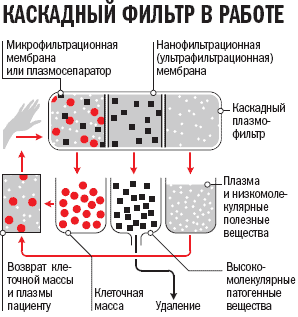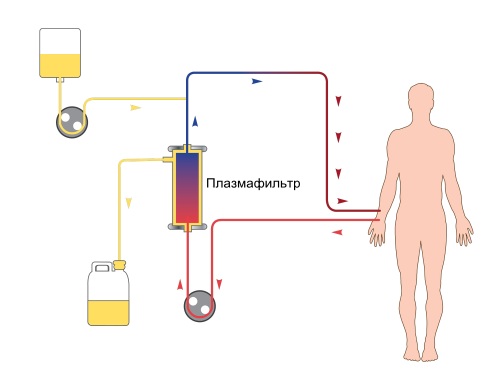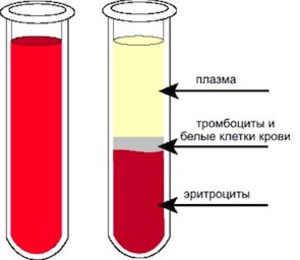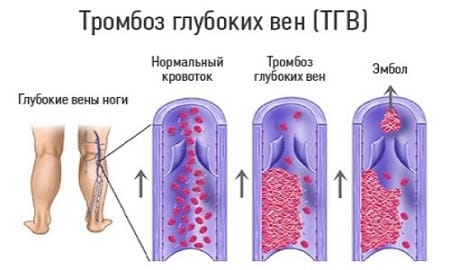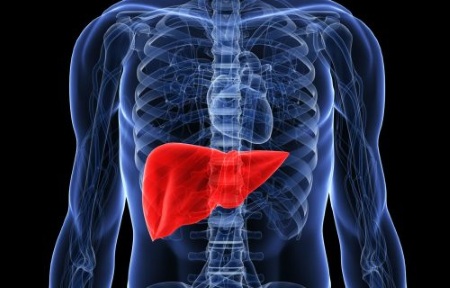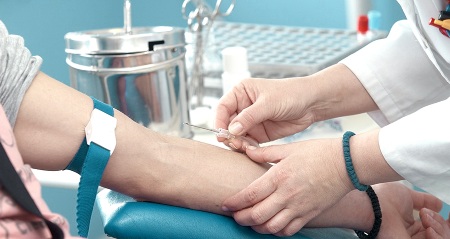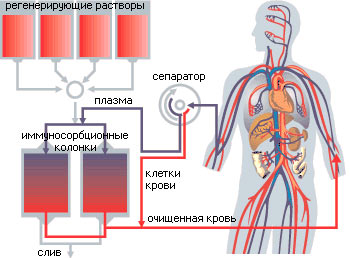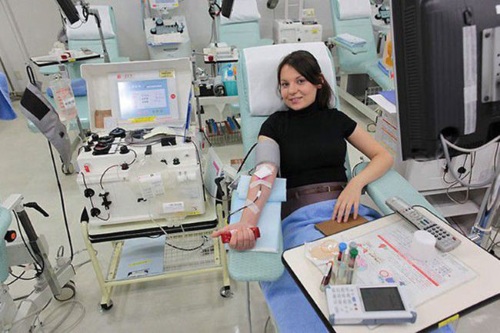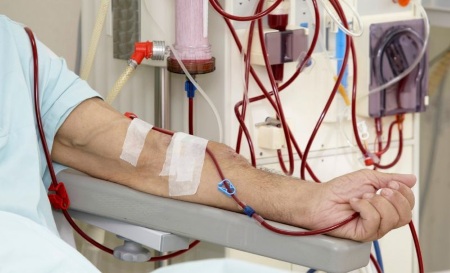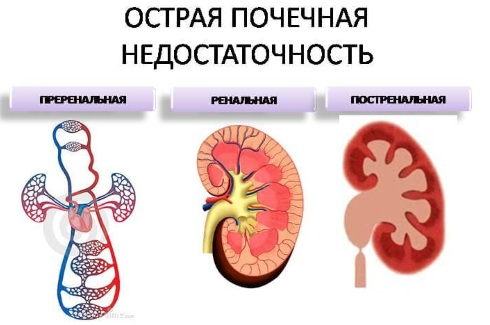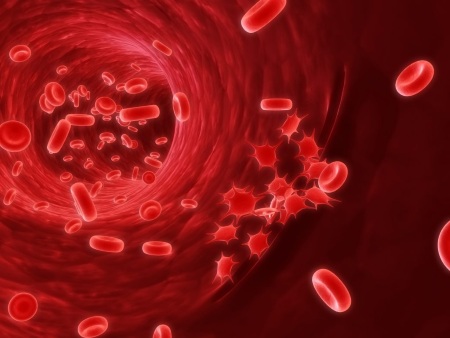Plasmaphoresis is a modern technology for cleaning the circulatory system from pathogenic plasma. The therapy is indicated for use in many diseases, and has a minimum of contraindications.
The concept of plasmaphoresis and its types
Plasmapheresis is a blood purification method. A small amount of biological fluid is taken from the circulatory system, passed through a special device, which divides it into plasma and uniform blood cells. The bioplasma is removed, and the other components are injected back into the bloodstream.
Simultaneously with blood sampling, it is replaced with special solutions, which are chosen, taking into account:
- the patient's condition;
- the nature of the disease;
- the amount of plasma removed.
Depending on the purpose, the procedure is divided into 2 types:
- Therapeutic - carried out to purify blood containing allergens, autoantibodies and toxins. The procedure reduces the concentration of harmful elements in the patient's body. It is considered part of the detoxification treatment.
- Donor - blood separation for healthy people for further transfusion to patients in need, or for the manufacture of necessary drugs.
Plasmapheresis is divided into varieties:
- sedimentation - bioplasma detachment occurs through sedimentation, here blood cells consistently go into sedimentary material;
- centrifugal - the separation procedure is accelerated due to the impact of centrifugal force on the blood particles;
- filtration - using special plasma filters;
- membrane - special thin lamellar membranes are used, allowing plasma to pass through and retaining blood cells;
- cascading - the extracted liquid red part is filtered again through a special device in order to let the albumin (low molecular weight protein) pass and retain lipoproteins (high molecular weight protein).
Classification
The procedure is classified in 3 directions:
- appointment;
- cleaning method;
- technology of conducting.
The category by appointment includes therapeutic and donor plasmaphoresis, as well as cryophoresis, during which the plasma is first frozen and then injected into the patient again after freezing.
According to the cleaning method, the procedure is divided into 2 groups. One of them is manual (discrete), in which a large amount of blood is extracted at a time, sent to a disinfected specially designed container and cleaned.
The cells that remained after plasma withdrawal are dissolved in saline and re-infused into the patient. This category includes sedimentation and centrifugal methods.
The second group includes hardware sampling, which is characterized by continuous cleaning and blood return. Here the red liquid is taken in small doses, supplied to the separator and returned in small portions as well.This technique is much more easily tolerated by a person, because it does not form a load. The hardware type includes cascade and membrane phoresis.
According to the technology, there are 2 ways to perform plasmaphoresis. The most common of these is with the help of centrifuges, which are configured by programs, while maintaining high-precision rotational and braking speeds.
This promotes good preservation of blood cells, as well as carbohydrate and protein components of the plasma. After the centrifuge, blood particles supplemented with the necessary substances or purified bioplasma are introduced into the patient's body.
The second method, safe and painless, involves separation through membrane filters. The red liquid reaches a special container and is filtered. In this case, harmful substances are detached along with the plasma.
Pros of the procedure
Plasmaphoresis (an indication for use has been established for many diseases) has advantages:
- cleanses the body of the existing toxic substances (antigens, allergens, inflammatory pathogens);
- for some pathologies, this technique is necessary (severe poisoning, blood poisoning, destabilization of the liver);
- improves the circulatory composition, suppresses acute manifestations of allergies;
- the blood fluid becomes less viscous, blood circulation is stabilized, while nutrition and oxygen are supplied to all tissues of the body;
- has a minimum of side effects, complications are rare;
- when taking blood, fluid from nearby tissue structures is directed to the vessels to replenish the volume, which prevents the appearance of various edema.
Cons of plasmaphoresis
The disadvantages of such therapy depend on the characteristics of its implementation.
- The effect after cleaning is short-lived in terms of the disease. For example, in case of poisoning, 1-2 manipulations are enough to remove toxins. In the case of further intake of toxic substances, the result is valid for 24 hours, and this means that the procedure should be performed in a course of at least 10 sessions.
- The high cost of plasmaphoresis. Some methods of its implementation differ in price. So the gravity method is much cheaper than the cascade method.
- The technique has some contraindications, in which the necessary proteins (fibrinogen, immunoglobulin) are removed along with toxins.
Indications for carrying out in gynecology, medicine
Plasmaphoresis (the indication for use is determined by the doctor) in medicine is carried out in the following conditions:
- overdose of medicines;
- increased blood viscosity;
- hypereffect from exposure to hormonal drugs;
- the presence of toxins in the liver;
- increased risk of thrombosis;
- insulin resistance in people with diabetes;
- with ailments of blood vessels and heart;
- in case of malfunctions in the digestive tract;
- for patients with acute manifestations of asthma, pneumonia and alveolitis;
- skin diseases (herpes, eczema, psoriasis);
- with violations of the functioning of the endocrine system;
- ophthalmic ailments of an inflammatory nature (pseudotumor, uiveitis), as well as retinopathy;
- deviations in the activity of the central nervous system (infection of a viral origin, encephalitis, sclerosis).
Plasmaphoresis has the following indications for use in gynecology:
- to prevent and reduce toxicosis in the first months of pregnancy;
- if there is a risk of Rh-conflict between the unborn child and the body of the carrying woman;
- if the patient had miscarriages due to an autoimmune disease or due to a pathology in the blood coagulation system;
- with fetoplacental insufficiency;
- as a treatment for cytamegalovirus and herpes during pregnancy planning and carrying a child;
- to reduce ovarian overstimulation, which often occurs after IVF;
- to reduce discomfort during PMS and menopause;
Plasmaphoresis will help with frequent menstrual pain and menopause - if a woman carrying a fetus has such ailments as asthma, pyelonephritis and diabetes;
- in case of postpartum complications;
- with infertility, which has arisen due to chronic inflammatory processes;
- to prevent and cure bleeding, and even with multiple organ disorders;
- as a restorative method following surgical manipulations on the pelvic organs;
- therapy of chronic diseases of the appendages and uterus.
Contraindications to plasmaphoresis
The procedure is contraindicated in some points, namely:
- in the presence of irreparable damage to organs;
- with persistent bleeding;
- imbalance in the blood coagulation system;
- stomach ulcer;
- dysfunction of the heart rhythm;
- fluctuations in blood pressure;
- decreased blood viscosity, monthly discharge;
- acute chronic diseases;
- anemia in elderly patients;
- serious liver ailments;
- uncompensated hypoproteinemia;
- long-term use of anticoagulants;
- fever, shock;
- foci of purulent lesions;
- inflammation of the venous network.
Negative effect on the body
Plasmapheresis negatively affects the body in the following cases:
- when injecting medicines that stop the formation of blood clots, and even donor plasma, an allergy may occur, reaching anaphylaxis;
- if a large amount of blood is withdrawn using the manual method, blood pressure can sharply decrease;
- with the infusion of drugs that reduce coagulation, bleeding may occur, or thrombosis occurs when they are insufficiently dosage. In this case, blood clots can spread and penetrate into smaller vessels;
- if the technology of the procedure is violated, there is a risk of infection;
- when replacing saline with plasma from a donor, there is a possibility of renal failure;
- when deviating from aseptic rules, sepsis may develop;
- elimination of useful elements along with toxins;
- a short decrease in immunity;
- metabolic disorders;
- headache.
Features of the method in the treatment of psoriasis, allergies
Plasmaphoresis (application to the indication should be established by a qualified doctor) is used in the treatment of allergies. In this case, simultaneously with plasma, unnecessary factors of immune activity, negative components and chemical elements are removed from the body. Here, the impact is made on the development of a protective reaction, and on the mechanism that excites allergies.
The duration of the therapeutic course for this disease is from 3 to 5 sessions. After passing it, the patient's signs of allergy become much less. It is worth considering that this procedure is one of the parts of the complex therapy of this ailment. The effect after the session lasts 6-12 months.
In psoriasis, plasma cytophoresis, in addition to the toxic elements formed as a result of impaired or increased metabolism.
The elements represented by:
- viruses;
- unoccupied hemoglobin;
- bacterial endotoxins.
The procedure involves the use of special filters, a centrifuge may be involved. These devices have plastic containers with blood, 500 ml each.
Gravitational forces distribute the red fluid to the detached blood cells, which are returned back into the patient's bloodstream. The removed plasma is disposed of. Plasmaphoresis in the treatment of psoriasis can be replaced by plasma exchange, in which 90% of the plasma circulating in the body is replaced.
The method in case of illness rather well increases the efficiency of the body, protects it from the effects of pathogenic factors, and increases the level of stress resistance.
Plasmaphoresis during pregnancy
Plasmopharesis (an indication for use during pregnancy is permissible) is prescribed in such cases:
- For women who smoke to cleanse the blood and remove toxins.
- Patients suffering from toxicosis feel much better after several sessions.
- With placental insufficiency.
- In 1.5 p. the number of intrauterine infections and the appearance of children with low weight decreases.
- The risk of blood clots and bleeding during childbirth is reduced, since the blood composition is normalized.
- In the presence of Rh-conflict, the technique will reduce the amount of antibodies to normal levels.
During the period of gestation, the extracorporeal procedure has contraindications:
- the presence of pathologies of a viral or infectious nature;
- at risk of miscarriage or the onset of premature labor.
Training
The extracorporeal procedure lasts at least an hour, and before it is carried out, the patient must undergo a thorough examination, which includes:
- therapeutic examination to measure blood pressure, heart rate readings, identification of the presence of ulcerative ailments, and other chronic diseases;
- make a blood test for glucose indicators, on the manifestation of Wasserman's reaction - to exclude the presence of syphilis;
- biochemical study of blood fluid - to assess the presence of proteins to make sure there is no hypoproteinemia. With plasmapheresis, a group of proteins is excreted simultaneously with plasma, and if their concentration is insufficient, it is advisable to refuse sessions;
- coagulogram - evaluates blood clotting, with the formation of blood clots - the method is indicated for use;
- ECG - in case of large disturbances in the rhythm of the heart, the procedure is not allowed.
A few days before such therapy, it is necessary to exclude the intake of caffeine, alcohol and drink plenty of fluids. Before starting the session, it is advisable to eat a balanced and light food.
Step-by-step procedure
When carrying out plasmaphoresis, there are no inconveniences; therapy is performed in a specially equipped room.
- The patient is placed on a chair in a recumbent or reclining position.
- A catheter or needle is inserted into the ulnar vein to draw blood.
- In modern installations, 2 needles are placed: through one of them, blood liquid tissue is taken, and through the other it is reintroduced into the human body.
- The red liquid is transferred to the hemo container, then divided into fractions. The division method depends on the type of apparatus used. In the meantime, the plasma is removed, while it is replaced with saline or other blood substitutes, in the appropriate volume.
- Along with the return of blood, the administration of prescribed medications is possible.
The duration of the session is 1-2 hours. The amount of purified blood is determined depending on the cleaning method and the doctor's advice. The manipulation is performed by a specially trained transfusiologist or anesthesiologist. For 1 session, on average, 30% of the total blood volume in the body is cleared.
A doctor or nurse is present during the procedure. The patient's condition is monitored continuously: blood composition, pressure and heart rate are measured.

 Don't miss the most popular column article: Plasmolifting of the face - what it is, how it is performed, results, photos before and after the procedure.
Don't miss the most popular column article: Plasmolifting of the face - what it is, how it is performed, results, photos before and after the procedure.Consequences and complications
Each person has an individual organism, therefore plasmaphoresis can sometimes cause complications and consequences:
- The manifestation of an allergy, which reaches anaphylactic shock (appear when substances that prevent the formation of blood clots are introduced into the bloodstream).
- Hypotension (occurs when a large volume of blood is removed from the patient's body at once).
- Bleeding (occurs due to excess dosage of drugs that reduce the ability of blood clotting).
- Thrombus formation (appear as a result of an insufficient portion of the above funds).
- Infection of the bloodstream (is a consequence of violations of aseptic rules, mainly with the manual method of plasmaphoresis).
- Renal failure (develops when replacing plasma with a donor one, while it is not compatible with the blood of the patient undergoing the procedure).
- Mortality rates after complications: 1 patient in 5000.
Rehabilitation period
On the first day after therapy, you should follow the recommendations:
- within 1 hour after therapy to be in the supine position, taking into account the general condition;
- exclude taking hot baths;
- do not consume hot food and drinks;
- refrain from sun exposure and avoid overheating;
- stick to bed rest.
If the extracorporeal procedure is done correctly, then, as a rule, complications are not traced. Sometimes there is a slight dizziness and nausea, which soon disappear.
If the malaise has worsened, there is swelling and itching in the area of the injection, joint pain and shortness of breath, you should consult a specialist as soon as possible.
Table of the average cost of 1 session in Moscow, St. Petersburg, regions
| Method | City | Cost, rub. |
| Membrane | Saint Petersburg | 5000-8000 |
| Moscow | 6000-8000 | |
| Novosibirsk | 6000 | |
| Tver | 7000-8000 | |
| Ekaterinburg | 6000-7000 | |
| Kazan | 4000-5000 | |
| Ryazan | 5000-6500 | |
| Discrete | Saint Petersburg | 3000-6000 |
| Moscow | 5000-6000 | |
| Novosibirsk | 2000-3000 | |
| Tver | 4000-5000 | |
| Ekaterinburg | 3000-5000 | |
| Kazan | 3000-4000 | |
| Ryazan | 2000-4000 |
Reviews of doctors about the effectiveness of plasmaphoresis
The opinions of doctors about the effectiveness of plasmapheresis are different, but mostly positive:
- the main positive result is the purification of the blood from toxins that contribute to the exacerbation of pathology;
- blood circulation in the affected area is normalized;
Plasmaphoresis helps to cleanse the blood and help bring blood circulation back to normal - pain sensations decrease;
- the need to use medication for the patient is reduced;
- the concentration of immunoglobulin and immune complexes in the human body is regulated;
- a good chance to painlessly switch from one medication to another if necessary;
- is a good alternative in arthritis therapy if a person is allergic to any of the standard treatment drugs;
- as a rule, the ineffectiveness of the technique is explained by the severity of the disease, when one extracorporeal procedure is not enough;
- negative aspects of performing the blood purification technique appear if the patient suffers from dermatological diseases;
- deterioration of well-being occurs with inaccurate removal of the plaster that secures the needle;
- for an effective result, you need to complete the full course of the prescribed treatment.
Plasmaphoresis alone does not guarantee a cure for diseases. If the method is indicated for use, it is desirable to combine it with drug therapy.
For a visible result, you need to complete a course of treatment prescribed by a qualified specialist.
Article design: Mila Friedan
Video about plasmaphoresis
Plasmapheresis work:
What is plasmapheresis:

